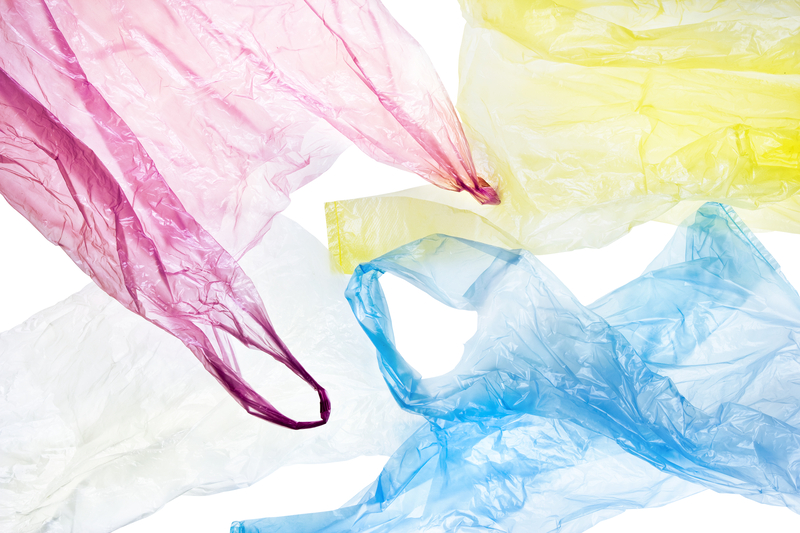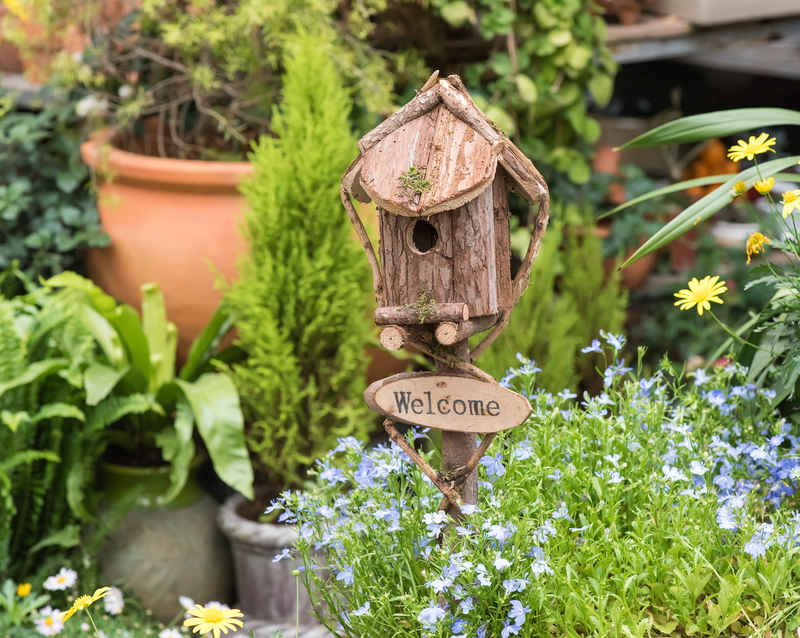Eco-Friendly Solutions for Plant Pot Disposal
Posted on 28/09/2025
Eco-Friendly Solutions for Plant Pot Disposal
Plants bring vibrancy, fresh air, and beauty into our homes, gardens, and communities. However, there's a hidden downside to frequent gardening and landscaping: plant pot disposal. Every year, millions of plastic, ceramic, and terracotta pots are discarded, contributing to landfill waste and environmental pollution. If you're looking to declutter your garden shed in a way that benefits both your space and the earth, this comprehensive guide will walk you through the eco-friendly solutions for plant pot disposal.

Understanding the Problem: The Environmental Impact of Discarded Plant Pots
Gardening is inherently green, but the widespread use of plastic plant pots undermines these eco-friendly values. Almost every nursery, supermarket, or plant seller packages their plants in a plastic pot. Let's examine why traditional methods of plant pot disposal are harmful:
- Plastic Waste: Many plant pots are made from non-biodegradable plastics, which persist in landfills for hundreds of years.
- Limited Recycling Options: Not all municipal recycling centers accept #5 polypropylene pots, and black plastic pots are often undetectable by sorting machines.
- Chemical Leaching: Old plastic pots can break down and release microplastics and chemicals into the soil and water streams.
- Resource Intensive: Ceramic and terracotta pots, while less harmful than plastics, require significant energy to produce and can also become waste if not properly reused.
It's clear that innovative, eco-friendly plant pot disposal is urgently needed. Below, we explore the best sustainable solutions for responsibly handling used plant pots.
1. Reuse: The Greenest Solution for Plant Pot Disposal
The most straightforward and sustainably-minded way to divert pots from the landfill is simple: reuse them! Here's how you can incorporate used pots into your lifestyle and garden:
a. Repurpose for New Plantings
- Propagation Stations: Small pots are ideal for starting seeds and cuttings.
- Seasonal Rotation: Swap out plants as the seasons change, reusing pots for different species.
- DIY Projects: Stack, paint, or decorate pots for unique garden art installations or planters.
b. Swap and Share with Your Community
- Host neighborhood plant pot swap events.
- Offer pots on online marketplaces like Craigslist, Freecycle, Facebook Marketplace, or local gardening forums.
- Contact schools, community gardens, or urban farms--these groups often welcome extra pots for planting projects.
c. Upcycle Creatively
- Create garden decorations: Convert empty pots into bird feeders or garden lanterns.
- Organize tools: Use larger pots to store hand tools, garden gloves, or hoses.
- Kids' Crafts: Let children decorate and plant seedlings, encouraging gardening skills from a young age.
By reusing plant pots, you extend their lifecycle, reduce demand for new products, and minimize the need for raw materials and manufacturing.
2. Recycling: Closing the Loop for Plant Pots
When reuse is no longer practical, the next best choice is recycling--another effective eco-friendly plant pot disposal solution. Recycling routes vary by material and local infrastructure:
a. Plastic Recycling
- Check Local Guidelines: Not all plastics are treated equally. Typically, #2 (HDPE), #5 (PP), and sometimes #6 (PS) pots can be recycled, but black plastics may cause sorting issues.
- Nursery Take-Back Programs: Many nurseries and garden centers offer dedicated collection bins for used pots. Large retailers such as Home Depot or Lowe's often have official recycling schemes.
- Clean Before Recycling: Ensure pots are free from soil and plant residue to prevent contamination in the recycling stream.
b. Ceramic and Terracotta Pots
- Municipal Facilities: Some cities accept ceramics and terracotta in construction waste sections or at specific recycling centers. Check your local waste authority.
- Repurpose: Broken terracotta can be used as drainage material in other pots or as mulch in garden beds.
Recycling extends the life of the materials used in plant pot production, reducing pressure on landfills and contributing to a circular economy.
3. Compostable and Biodegradable Plant Pots: The Green Future
As environmental concerns mount, many manufacturers are innovating with biodegradable and compostable plant pots. These options are especially appealing for growers aiming for zero-waste gardening:
- Material Types: Pots made from coir (coconut fiber), rice husk, peat, manure, or plant starch can decompose completely in compost piles.
- Plant-Direct Method: Biodegradable pots can be planted directly into the soil, minimizing transplant shock for sensitive species.
- Waste-Free Disposal: Once used, these natural pots become part of your compost, feeding the next generation of plants.
Incorporating compostable planters into your gardening routine is a powerful step toward truly sustainable plant pot disposal.
4. Donation: One Gardener's Trash is Another's Treasure
If your used plant pots are still in good condition but no longer needed, consider donating them. Many organizations appreciate contributions of gardening supplies:
- Schools: Science and art departments often use small pots for experiments or projects.
- Urban Farms, Allotments, and Community Gardens: These spaces are usually on tight budgets and rely on donations.
- Nonprofits and Charities: Contact local charities that run plant sales or horticultural therapy programs.
By donating, you keep pots in circulation and support community green initiatives, maximizing sustainable plant pot disposal.
5. Responsible Disposal for Non-Recyclable Plant Pots
Not every material is easily recycled, and sometimes pots are too degraded for reuse or donation. In these cases, responsible disposal is key:
- Ceramic and Clay: Shatter broken pottery and use it as drainage in garden beds or under new pots.
- Metal or Other Materials: Contact local scrap yards or hardware stores for recycling options.
- Last Resort: Landfill: As a final step, dispose of only non-recyclable or hazardous materials through your community's waste program. Make sure to remove as much soil and organic residue as possible.
Whenever possible, rethink before tossing. Every pot reused or recycled is one less added to an overflowing landfill!
Tips to Reduce Plant Pot Waste in the First Place
Eliminating the waste problem at the source is the most effective eco-friendly plant pot disposal solution. Here's how you can minimize the generation of unwanted pots:
- Buy Plants with Minimal Packaging: Choose bare-root or ball-and-burlap plants over potted ones.
- Returnable Pot Schemes: Support nurseries or retailers with pot return and reuse programs.
- Start from Seed: Cultivate plants at home using newspaper, toilet roll, or other biodegradable starter pots.
- Opt for Biodegradable Pots: When buying plants, select those in eco-friendly plant containers.
- Care for Your Pots: Store pots properly to extend their life and use them season after season.

The Role of Businesses and Retailers in Plant Pot Disposal
For a truly sustainable horticulture industry, producers and retailers must also take responsibility. Here are some of the ways businesses can support eco-conscious plant pot disposal:
- Switch to Recycled or Biodegradable Materials: Use post-consumer recycled plastics, or alternatives like compostable coir or rice husks.
- Take-Back Initiatives: Set up collection points for customers to drop off old pots for recycling or reuse.
- Incentivize Returns: Offer discounts, coupons, or loyalty points to shoppers who bring back used pots.
- Educate Consumers: Provide clear signage and online resources about safe disposal and recycling options.
By advocating and supporting these changes, consumers can inspire more retailers to take action, helping the entire sector shift toward eco-friendly plant pot management.
Conclusion: Cultivating a Sustainable Gardening Future By Disposing of Plant Pots Responsibly
As gardeners, landscapers, or plant lovers, our actions have a direct impact on the planet. It's no longer enough to grow green--we must also dispose of our gardening materials in an eco-friendly, conscious way. By adopting the principles of reuse, recycle, donate, utilize compostable plant pots, and advocate for change, we can drastically reduce the environmental footprint of our gardens.
Remember, every small step counts--whether repurposing an old pot for seedlings, dropping off unwanted containers at your local nursery, or choosing biodegradable planters when shopping for new plants. Together, we can help make plant pot disposal a sustainable act that truly reflects our love for the earth.
Eco-friendly solutions for plant pot disposal aren't just about waste--you're creating a healthier, less polluted world for future generations of gardeners and plant lovers.
Let's grow greener--one pot at a time!
- Share this guide with friends and gardening groups to spread the word about sustainable plant pot disposal solutions.
- Ask your local nursery or garden center about their eco-friendly initiatives.
- Commit to buying and using compostable, recyclable, or reused plant pots whenever possible.
For more tips on eco-friendly gardening, keep exploring our articles and help cultivate a better planet.

 020 3875 4152
020 3875 4152 020 3875 4152
020 3875 4152




 House clearance
House clearance WASTE REMOVAL
WASTE REMOVAL





